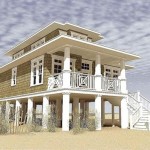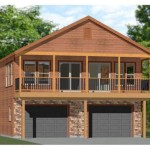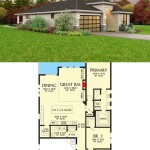Floor Plan Basics for Your Dream House
A well-designed floor plan is the foundation of any successful home. It dictates the flow of space, functionality, and overall livability. Understanding the basics of floor planning is crucial whether building a new home or renovating an existing one. This article explores key aspects to consider when designing or evaluating a house's floor plan.
Understanding Your Needs and Lifestyle
Before diving into room dimensions and layouts, identify lifestyle needs and priorities. This crucial first step informs the design process and ensures the final floor plan supports daily routines and long-term goals.
- Number of occupants: Consider current and future family size.
- Lifestyle: Entertaining frequency, work-from-home requirements, and hobbies influence space allocation.
- Accessibility needs: Account for current or potential future mobility requirements.
- Storage: Evaluate current belongings and anticipate future storage requirements.
Key Areas and Their Functions
Residential floor plans typically revolve around key areas designated for specific functions. Understanding the purpose and optimal placement of these areas is essential for creating a functional and harmonious living space.
- Living Area: Designed for relaxation and social gatherings, often connected to the dining area and kitchen for an open-plan feel.
- Kitchen: The heart of the home, requires careful planning to optimize workflow and efficiency.
- Dining Area: Can be a separate room or integrated into the living or kitchen area, depending on space and preference.
- Bedrooms: Prioritize privacy and comfortable sizes, factoring in closet space.
- Bathrooms: Consider the number and location for convenience and accessibility.
Traffic Flow and Circulation
Effective traffic flow ensures easy movement between rooms and minimizes congestion. A well-planned circulation pattern considers both daily routines and entertaining scenarios.
- Minimize hallways: While hallways provide privacy, excessive hallway space reduces usable living area.
- Clear pathways: Furniture placement should not obstruct movement within and between rooms.
- Consider furniture size: Plan for furniture dimensions to ensure adequate space for movement.
Natural Light and Ventilation
Maximizing natural light and ventilation contributes to a healthy and pleasant living environment. Consider the orientation of the house and window placement to optimize these elements.
- Window placement: Strategically position windows to capture sunlight and cross-ventilation.
- Room orientation: Living areas and bedrooms should ideally face south or west to benefit from daylight.
- Skylights: Introduce natural light into areas with limited wall space.
Space Optimization and Room Dimensions
Careful space planning ensures that every square foot is utilized effectively. Consider room dimensions and their relationship to furniture placement and intended functions.
- Standard dimensions: Research typical room sizes to ensure adequate space for intended functions.
- Furniture placement: Plan furniture layouts to verify comfortable spacing and traffic flow.
- Multi-functional spaces: Consider incorporating multi-functional areas to maximize space utilization.
Storage Solutions
Adequate storage is essential for maintaining a clutter-free and organized home. Incorporate storage solutions into the floor plan from the outset.
- Closets: Include closets in bedrooms and hallways for clothing and personal belongings.
- Built-in storage: Utilize built-in shelves and cabinets to maximize vertical space.
- Pantry and utility spaces: Dedicate space for food storage and household items.
Flexibility and Future Adaptability
Consider potential future needs when designing a floor plan. A flexible design can adapt to changing lifestyle requirements without major renovations.
- Open plan layouts: Provide flexibility for rearranging furniture and redefining spaces.
- Adaptable rooms: Design rooms that can serve multiple purposes as needed.
- Universal design principles: Incorporate features that cater to a wide range of ages and abilities.
Connecting Indoor and Outdoor Spaces
Integrating indoor and outdoor living spaces enhances the overall living experience. Consider how the floor plan connects to patios, decks, or gardens.
- Outdoor access: Provide easy access from living areas to outdoor spaces.
- Visual connections: Design large windows and doors to create visual connections with the outdoors.
- Outdoor living areas: Incorporate covered patios or decks for year-round enjoyment.

Small House Design 2024001 Pinoy Eplans Floor Plans Home

Simple House 2nd Floor Plan Template

Simple House Plans 3 Room Design Nethouseplans Small Blueprints Budget

Simple House Plans Blog Homeplans Com

Est House Plans To Build Simple With Style Blog Eplans Com

Stylish And Simple Inexpensive House Plans To Build Houseplans Blog Com

Simple House Design Floor Plan Template

Simple House Plan Design With Garage

Simple House Plans Blog Homeplans Com

Stylish And Simple Inexpensive House Plans To Build Houseplans Blog Com
Related Posts








